IN the years before Clydach Gorge was raped and ravaged by the industrialists, many believe a certain young man who would go on to change the world was so seduced and enraptured by its natural beauty and mystical otherness, he decided to immortalise it and its peculiar inhabitants in verse.
The man was William Shakespeare and the play was Midsummer Night's Dream.
Visitors to the gorge today cannot help but notice its ironworks, lime works, quarries, railroads, tram roads, and great bridges. They linger in the sprawling landscape like relics of some brutal alien civilisation. Their mute abandonment serves as a stark reminder of how all endeavour, innovation, and industry will all one day be rendered obsolete by nature and time.

As it was in Shakespeare's day, it is now the waterfalls, the caves, ancient woodland, and the unspoiled and peculiar sense of that which is hidden and unknown which brings people to the gorge - particularly its mythical inhabitants.
In the English tongue, they call them the fair folk but in the Land of our Fathers, they are known as the Tylwyth Teg.
The Tylwyth Teg live underground or in water and in Wales, their number is said to be great, especially in the area of the Clydach Gorge.
A soul alone in the Gorge, amongst its cascading waterfalls, towering trees, and eerie silence, can well imagine how the young bard took inspiration from such a setting.
In such places it is still possible to believe, like our ancestors once did, that the sunlight playing upon the water, the breeze that shakes the trees, and the shadows that dance elusively on the periphery of our vision are all signs that the fair folk still walk amongst us.
Long before Tinker Bell or even Titania, people were fascinated by these ‘natural spirits’ that have haunted woodland, glen, and our imaginations since humanity was in its infancy.
People didn’t just once believe in fairies they thought it was dangerous not to! In an age before Peter Pan and Walt Disney projected a universal image of what a fairy looks like and how it acts, the fair folk loomed large in the collective mind. They weren’t dainty little creatures who fluttered around the place on wings, waved wands, and granted wishes, but a proud, noble, and fearsome race of creatures that commanded respect.
The TV adaption of Susanna Clarke’s ‘Jonathan Strange and Mr Norrell’ contains a fine example of how the Fair Folk were once viewed. The fairy character, simply called ‘the gentleman’ and played with just the right mix of charm and otherworldly menace by Marc Warren is all but human in appearance but for the sense of never being quite real. Almost like a creature that exists beyond the confines of space and time. The character has a hypnotic and enchanting quality, but beneath the ‘glamor’ of cultural sophistication and high wit there is also a cruel and manipulative streak that views all mortals as something to be toyed with.
It’s this inhuman aspect of the fair folk that often saw them described as fallen angels who fell out of Heaven and were condemned to live beneath the ground and only allowed to wander above it when the Fairy King permitted.
William Cashen, Keeper of Peel Castle in the Isle of Man said in 1909, “My father and grandfather’s idea was that the fairies tumbled out of the battlements of Heaven, falling earthward for three days and three nights as thick as hail; and that one-third of them fell into the sea, one third on the land, and one third remained in the air, in which places they will remain till the Day of Judgement.” Ironically, the belief in fairies was considered heresy, and to a largely Christian world, this was no small thing. Yet millions of god-fearing people still maintained their belief in the fair folk, respected their sacred places and left them offerings for their blessings and to avoid their wrath, when the church told them to do so was a sin.
Old habits die hard and fairies had such a grip on the human imagination that a world without them seemed a lot more dreary and dull than one enriched by their quicksilver presence, unorthodox ways, and wild, untamed spirit.
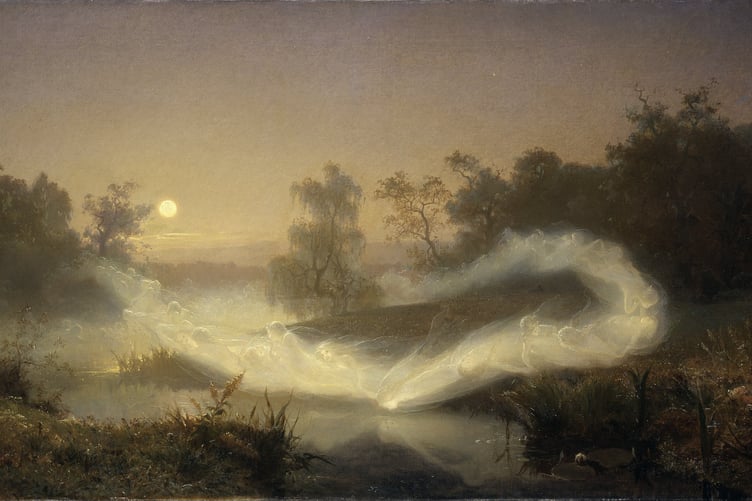
Take the curious case of the Rev. Edmund Jones. Born in Nantyglo in 1702, the deeply religious Jones built the Ebenezer Methodist chapel in Pontypool and was a devout Christian until his death aged 91. He also called anyone who questioned the existence of fairies an “infidel!”
Known as “Yr Hen Broffwyd” or “The Old Prophet” Jones was deeply interested in the supernatural and considered the fairy realms as part of god’s creation. His book “A Relation of Apparitions of Spirits in the Principality of Wales” has detailed accounts of encounters with fairies. Although Jones believed in the fairies he felt it was important to maintain respect and keep a healthy distance. He said of fairy rings, “The fairies dance in circles in dry places; and the Scripture saith that 'the walk of evil spirits is in dry places. They favour the oak tree. Formerly, it was dangerous to cut down a female oak in a fair dry place. Some were said to lose their lives by it, by a strange aching pain which admitted of no remedy, as one of my ancestors did.”
Fairies were said to be a hot-heated and individualistic lot and the old Welsh proverb ‘Ni chytunant hwy mwy na Bendith eu Mamau,’ translates as ‘they will no more agree than the fairies.’
Fairies are said to love feasting, drinking, hunting, and playing pranks, but their biggest passion is for music and dance. In his 1880 book, ‘British Goblins: Welsh Folk-Lore, Fairy Mythology, Legends And Traditions,’ author Wirt Sikes writes, “The Welsh fairies are most often dancing together when seen. They seek to entice mortals to dance with them, and when anyone is drawn to do so, it is more than probable he will not return to his friends for a long time. Edmund William Rees, of Aberystwyth, was thus drawn away by the fairies, and came back at the year’s end, looking very bad. But he could not give a very clear account of what he had been about, only said he had been dancing. This was a common thing in these cases. Either they were not able to, or they dared not, talk about their experiences.”
Sikes added, “In a certain sense Wales may be spoken of as the cradle of fairy legend.’
In the Welsh story collection The Mabinogion, the companions of the King of Britain, Bran the Blessed, are tasked with taking his severed head back to the mainland from Ireland. Their journey takes over 80 years because it is a trip through the faery realms.
Just outside of Pembroke the companions enter a realm where “They were lacking nothing- and were completely free of care. Of all the grief that they had witnessed or experienced themselves- there was no longer any memory or any of the sorrow in the world. Eighty years they passed there, having never enjoyed a period of time as carefree or light-hearted as that.”
The Carmarthenshire ‘physicians of Myddfai’ were said to have been blessed with healing powers after a fairy lady emerged from Llyn y Fan Fach Lake and taught them the ways of fairy doctors. And in 1870 the curate Francis Kilvert wrote, “We don’t see them now because we have more faith in the Lord Jesus and don’t think of them. But I believe the fairies travel yet. My sister’s son, who works at the collieries in Monmouthshire, once told me he saw the fairies dancing to beautiful music, sweet music, in a Monmouthshire field. Then they all came over a stile close by him. They were very yellow in the face and dressed almost in red. He did not like to see them. He fully believes he saw them and so do I.”
The atmospheric and rain-heavy mist that hangs heavy on the Welsh mountains like a veil covering this world from the next is said by folklore experts to be perfect conditions for spotting the Tylwyth Teg, who enjoy the cover it affords them.
It seems the belief in the fey is built into our DNA.
Unfortunately, from vampires to werewolves no other supernatural creature has suffered such an unjust and complete overall of their image than a fairy. They’ve been reduced from mysterious beings who stand at the doorway to another realm to little more than playful cartoons.
It’s a far cry from the ‘nature spirits’ whose trees and paths were considered sacred by our ancestors and whose ire we were very careful not to provoke.
Yet despite fairies being reduced too little more than a children’s plaything, their power to engage and beguile the imagination remains undiminished in certain circumstances.
In November 1951, workmen in the pay of Limerick Corporation were ordered to clear the mound of a site where 475 houses were to be built. They downed tools when they realised the site was said to be the home of a fairy fort. The workers had the backing of the Limerick City Mayor Matthew Macken who said, “If I have to get a gun to defend the fort from the bulldozers I will certainly do it.”
In 1982 a NATO base in Keflavik was surrounded by 150 Icelandic protestors. They felt the ‘hidden people’ would find American jets on their sacred ground disrespectful.
In the wake of the industrial carnage and senselessness of the First World War, the whole world found solace in the fantastical story of two young girls encountering fairies in the small English village of Cottingley. What’s more, they had the photos to prove it. The pictures were later proved a hoax but the interest they generated shows how much people want to believe in the existence of fairies.
Even the creator of Sherlock Holmes, Conan Doyle was taken in by the hoax. In a 1985 interview one of the girls behind the photos, Elsie Wright mused, “I can’t understand to this day why they were taken in - they wanted to be taken in.”
Before a child is introduced to any sort of religion or history of the world, they are told fairy tales in the crib. Stories from another time and place where anything is possible and all is an illusion except for the transformative power of magic and imagination.
They are not just food for thought, but a balm and inspiration for any soul born into a reality their mind has the power to help shape and transform.
As we grow, we lose a child’s natural wonder for seeing the world with eyes newly born and alive to its manifest wonder. Our ears become deaf to the whisper of the wind and the melody of the stream. Our eyes blind to the patterns in the grass and the faces in the tree, and our souls cut off from the enchantment of moonlight, meadow, and the Tylwyth Teg.
We stop believing in fairies because we’re told it’s childish and this utilitarian world of bottom lines, conflict, uniformity, and drudge has no room for a child’s fancy. We can put a man on the moon and send an instant message to someone on the other side of the world, but the fey still seems like a remote dream that happened in a fevered man’s mind a million years ago.
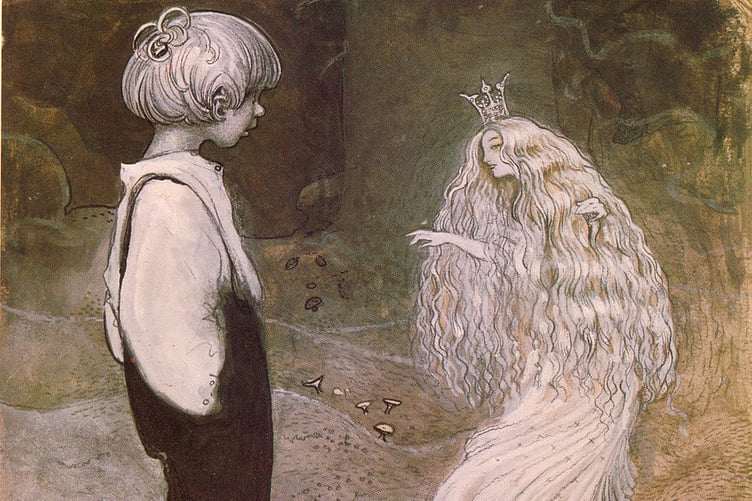
Yet deep within there is always a little sing-song voice that constantly pleads, “What if…?” “What if fairies are real and you’ve just forgotten how to see them or been taught not too?” Listen to that voice next time you’re alone on a high hilltop when the sun sets and the shadows gather, or walking through a forest on a spring afternoon and the dappled sunlight suddenly illuminates a clearing, and just maybe, something magical will happen and you’ll be away with the fairies.
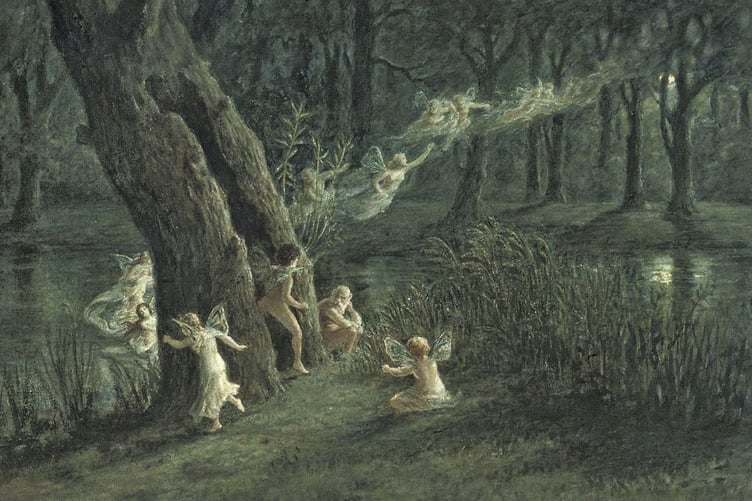
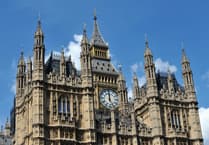

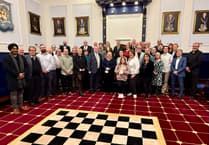

Comments
This article has no comments yet. Be the first to leave a comment.